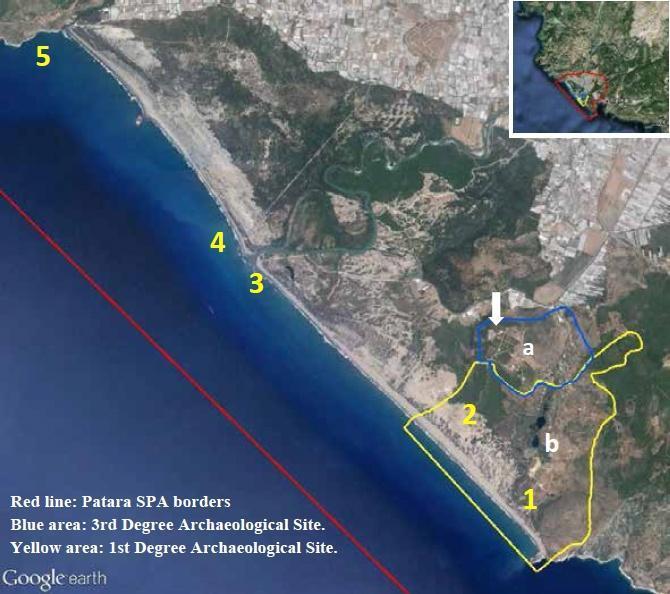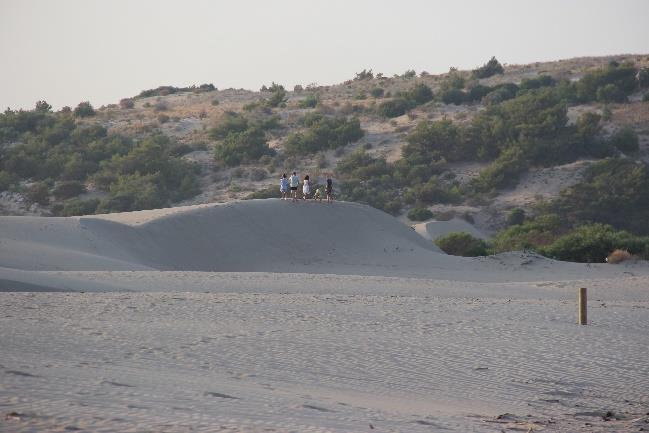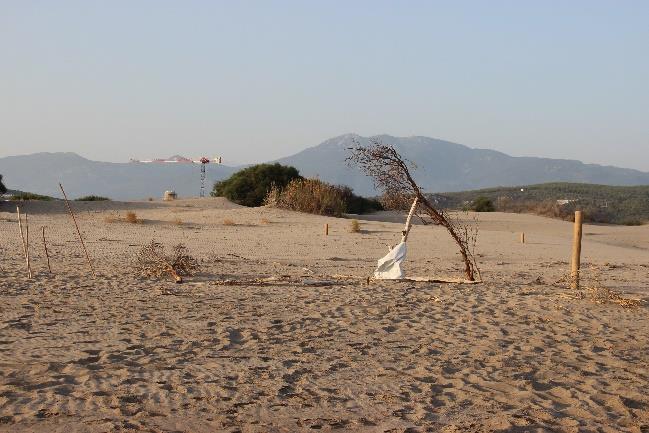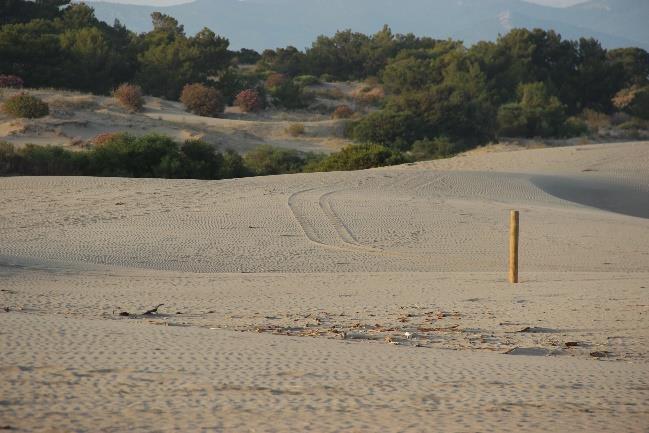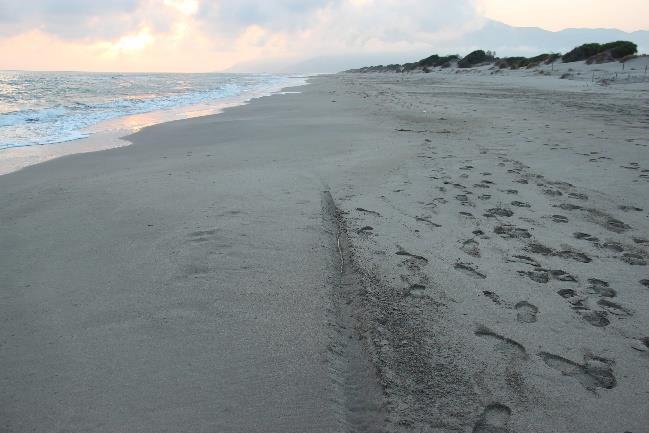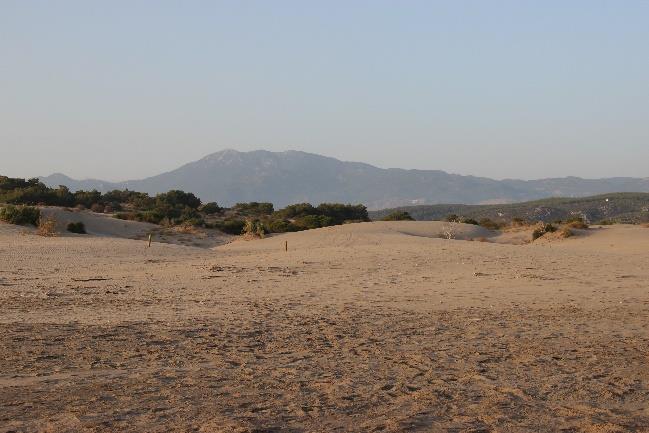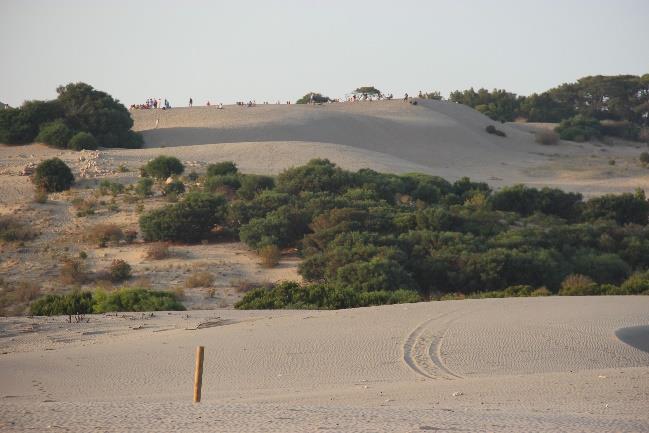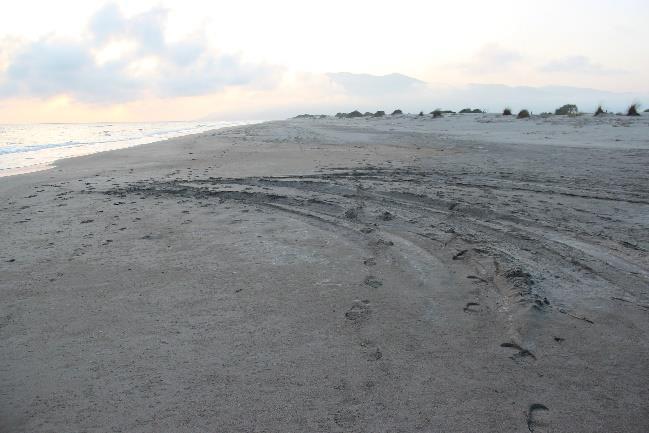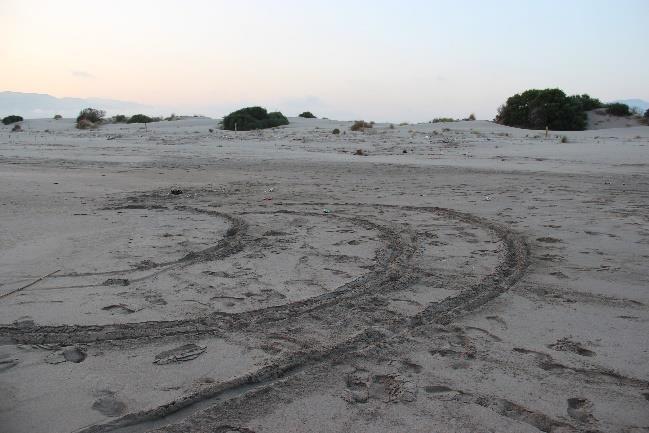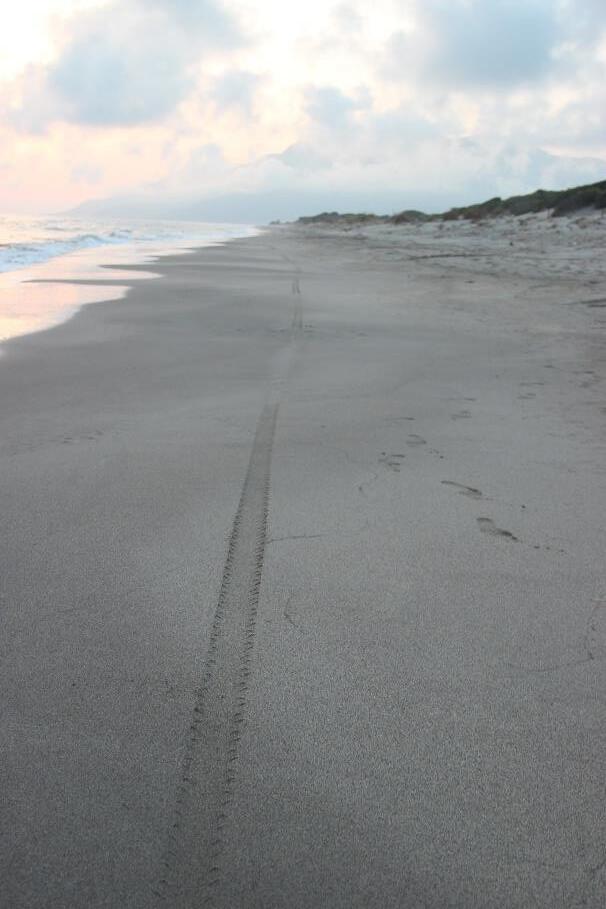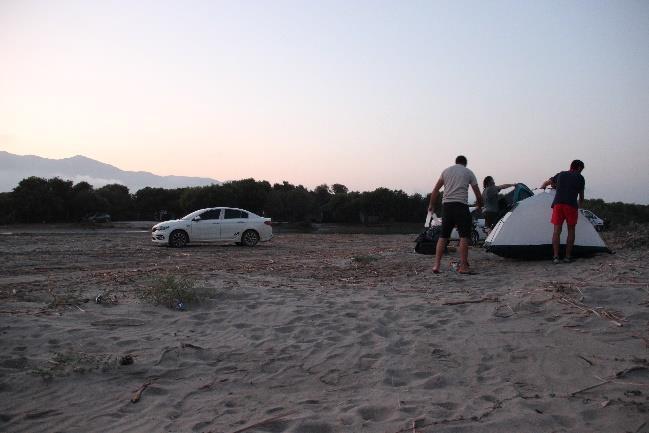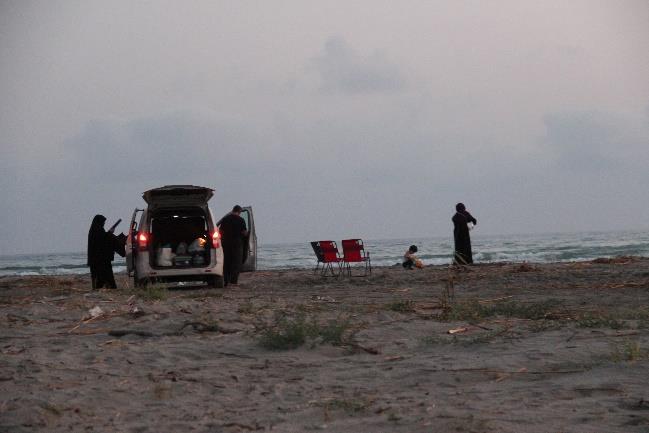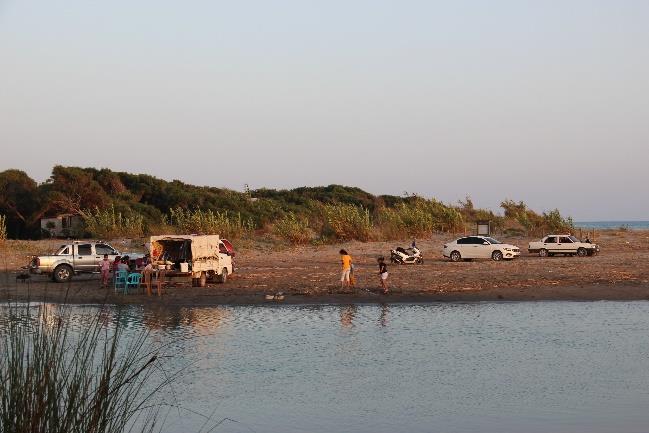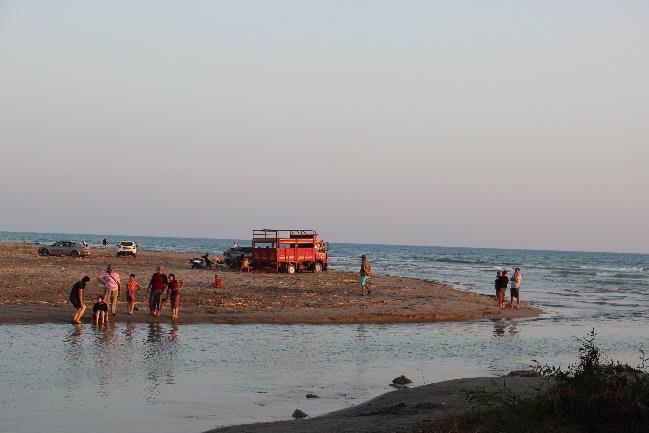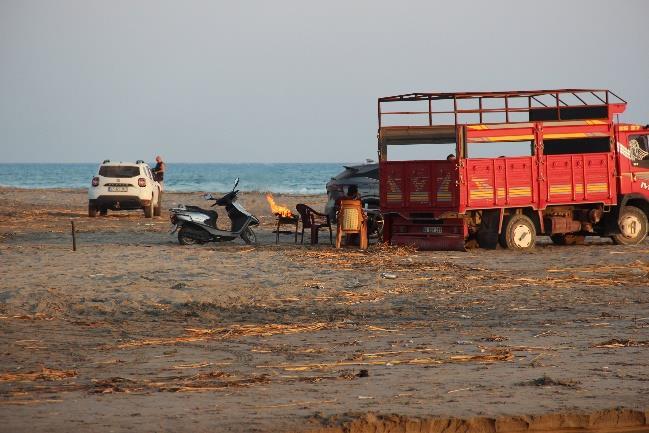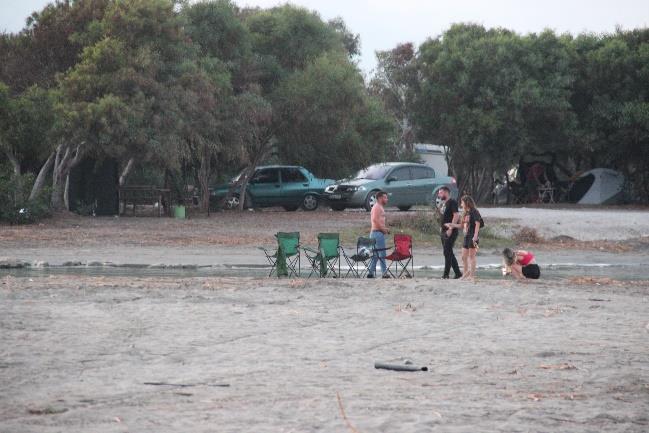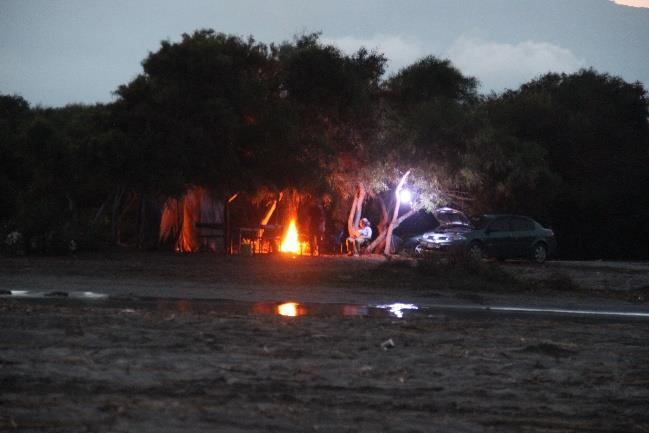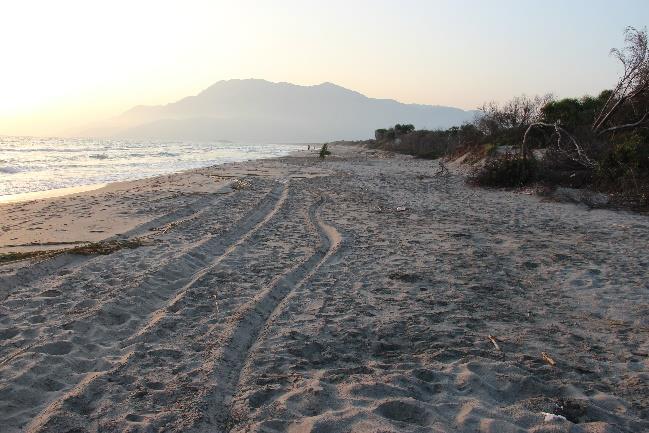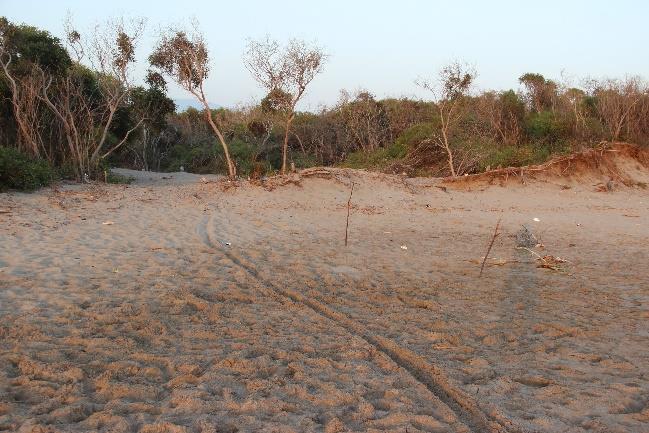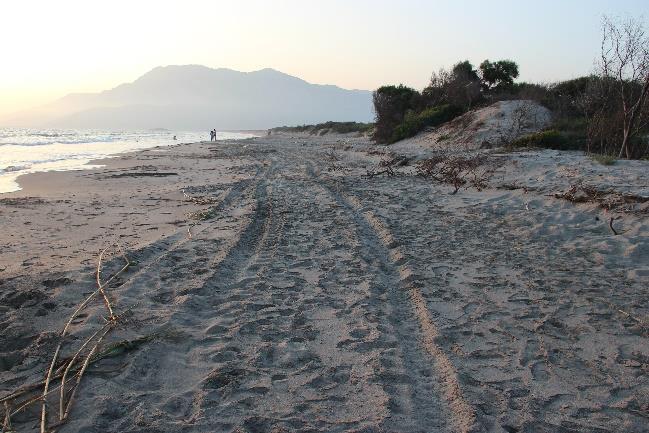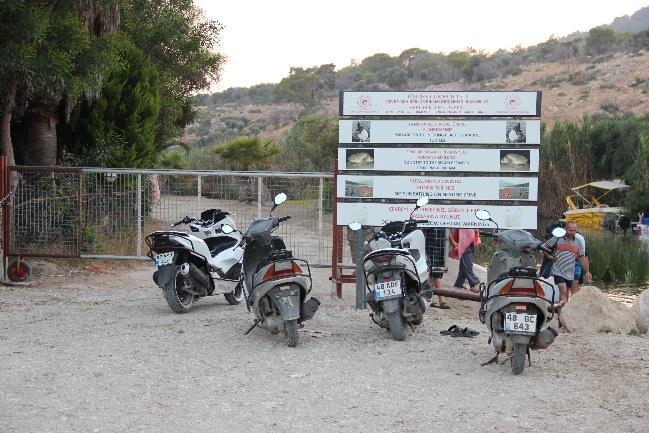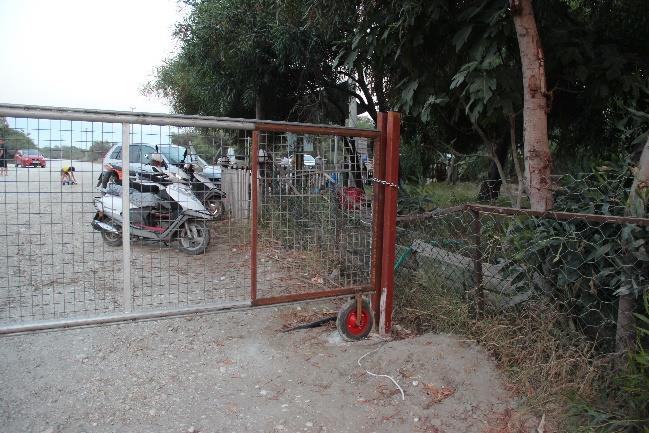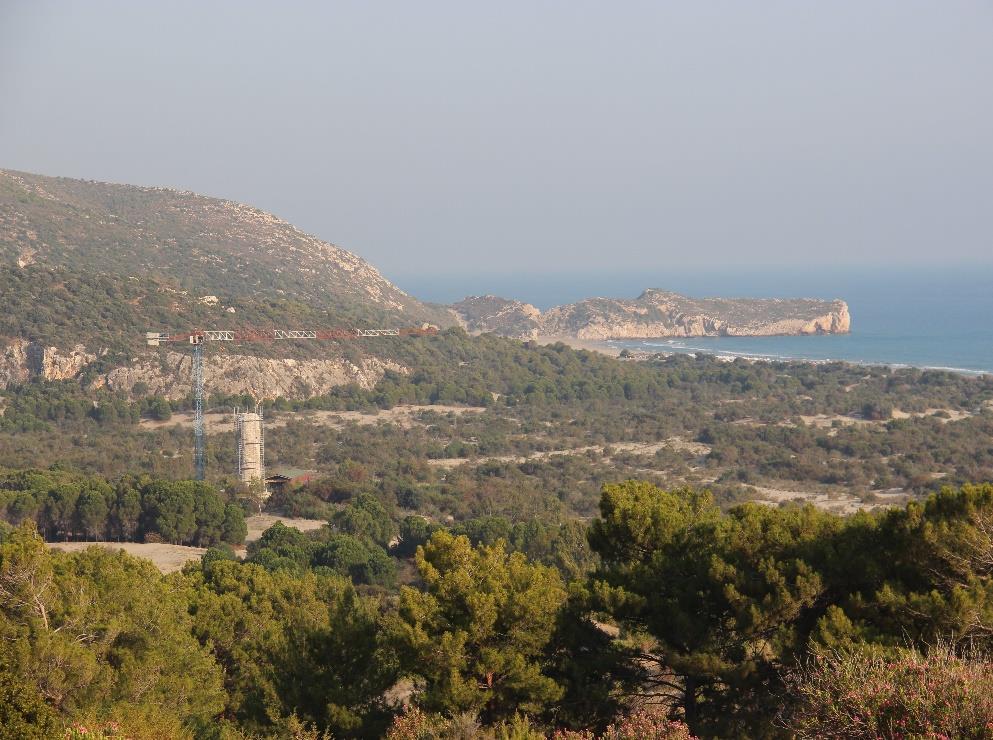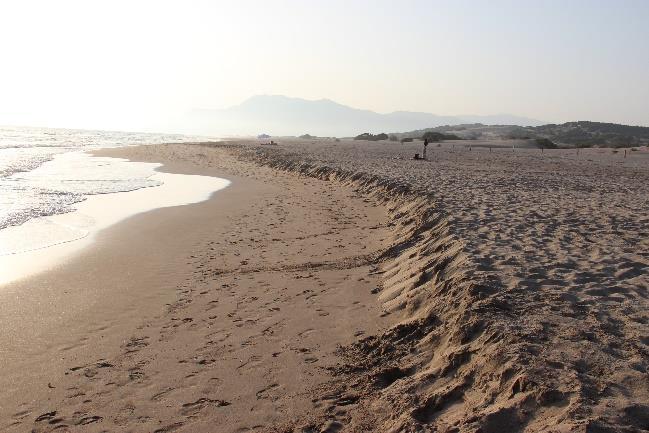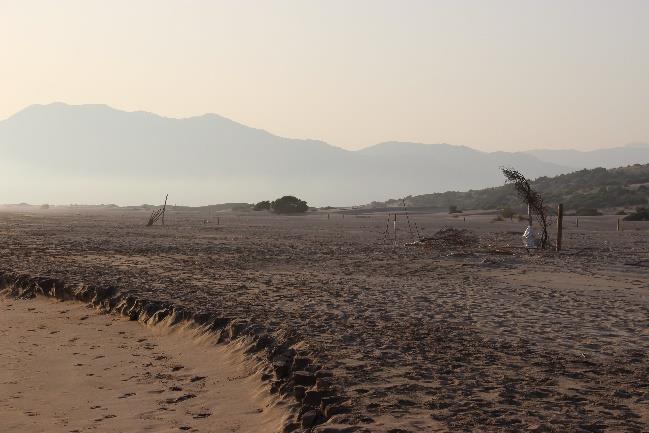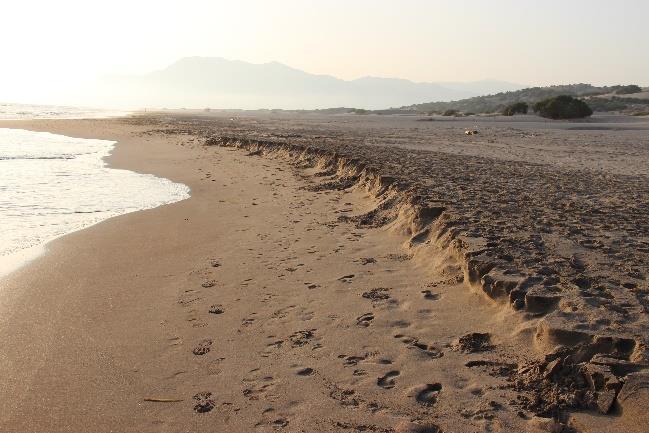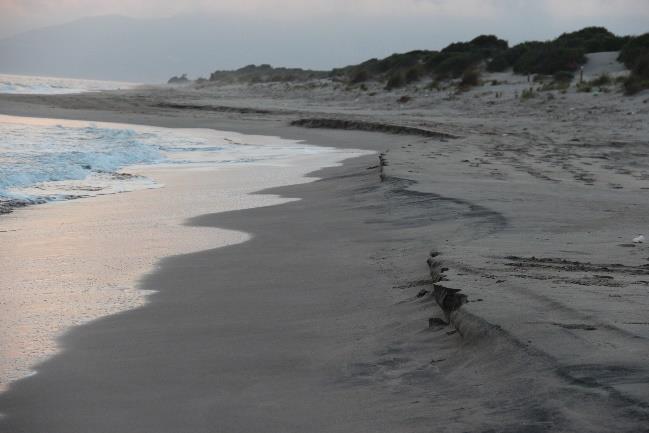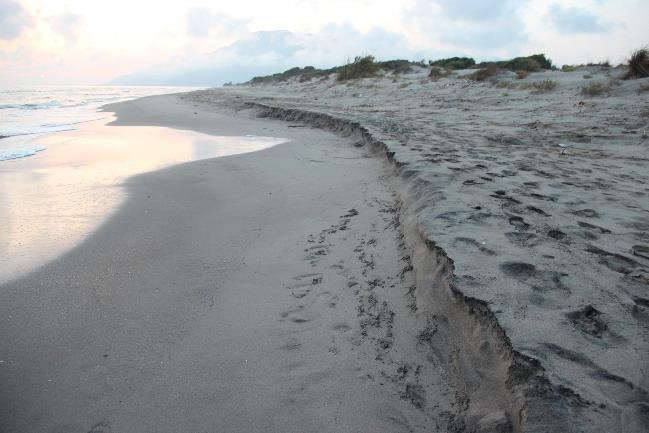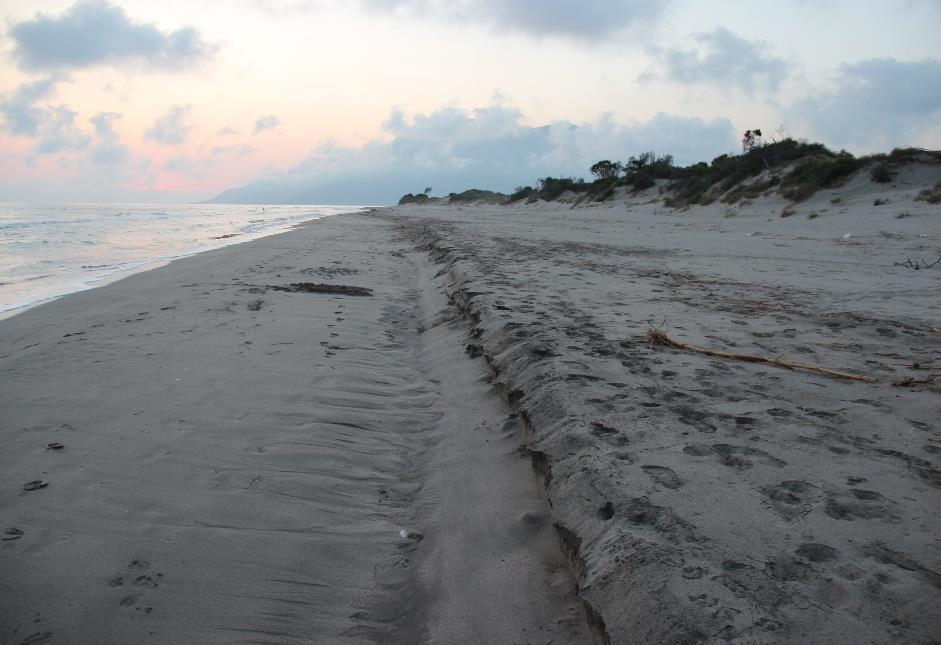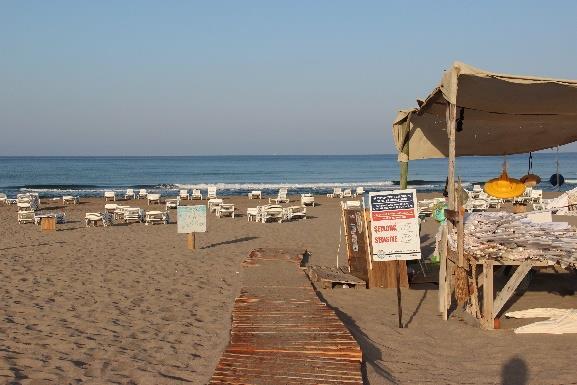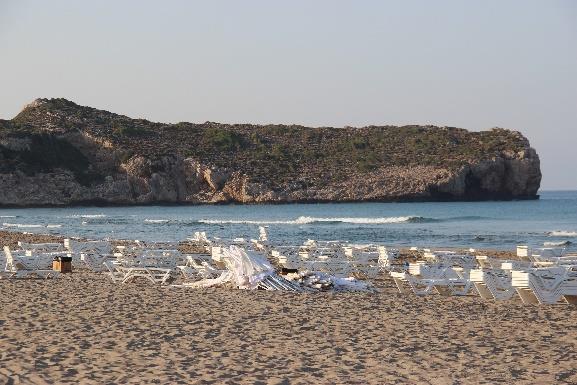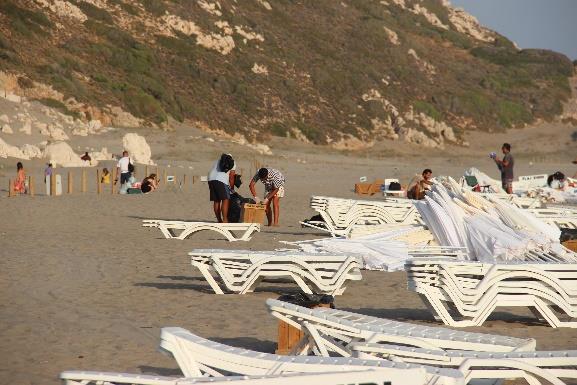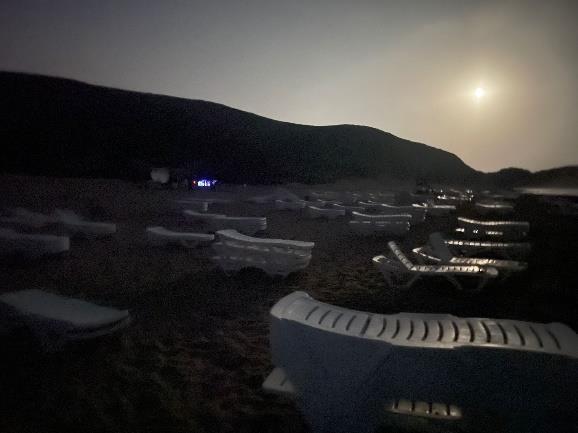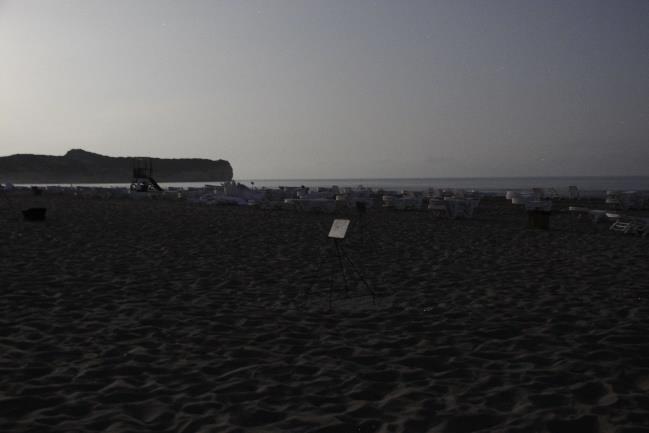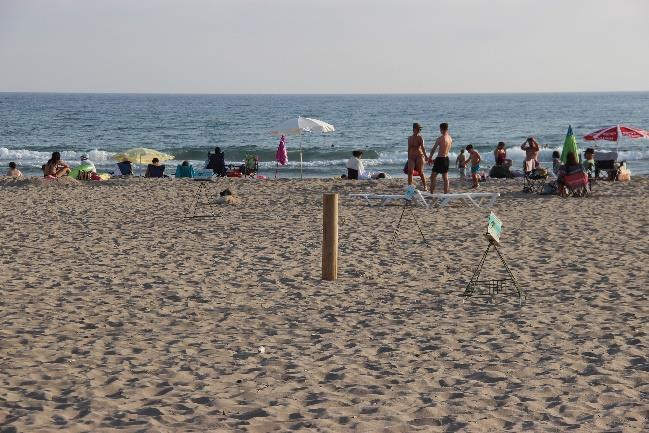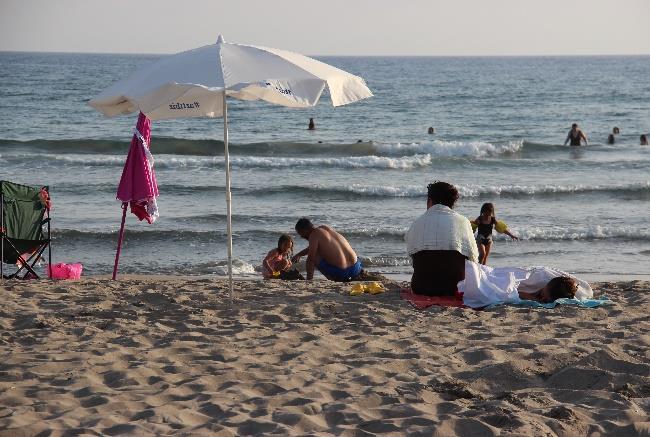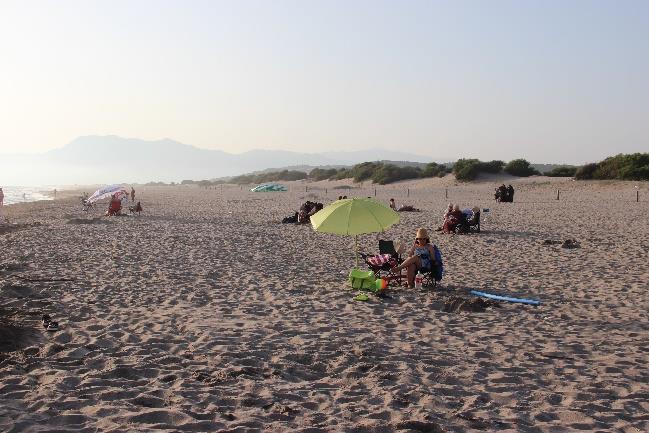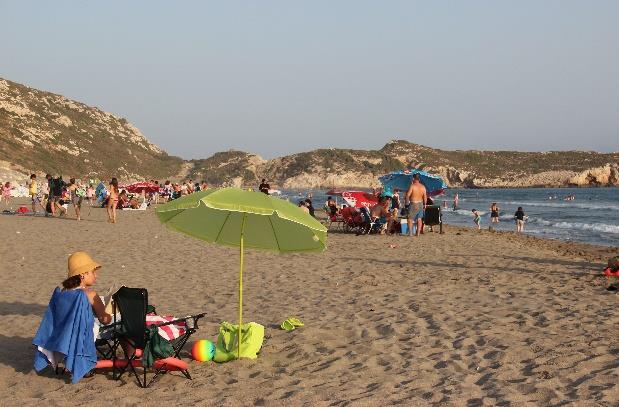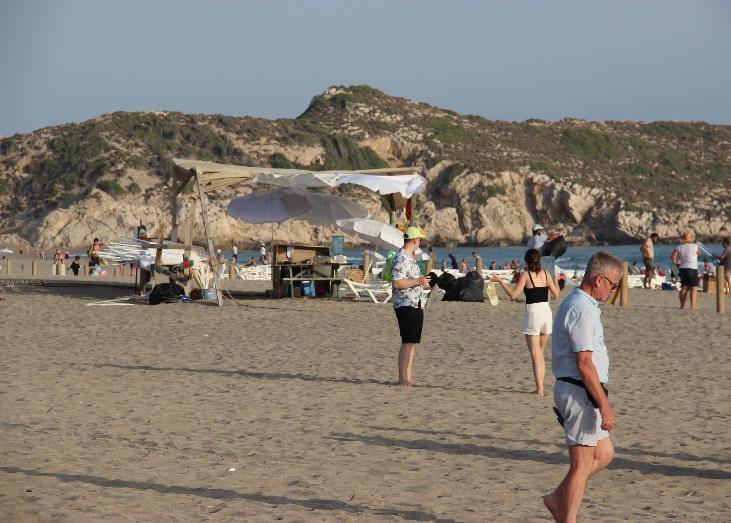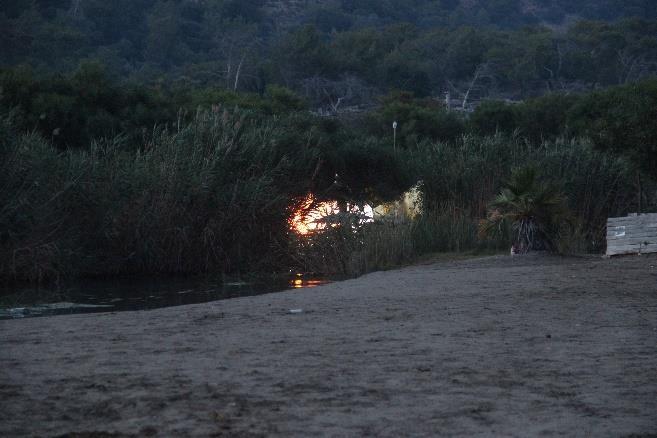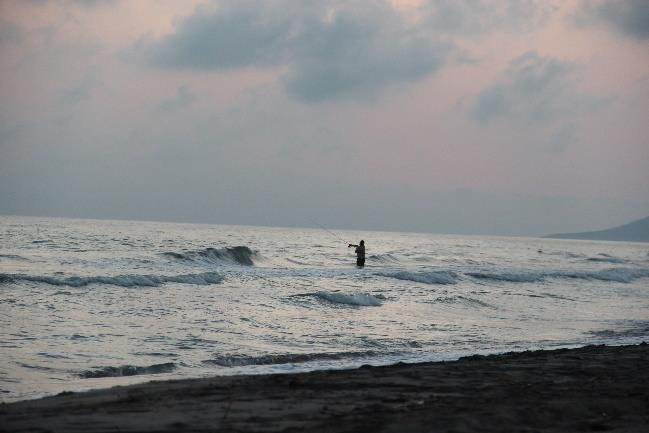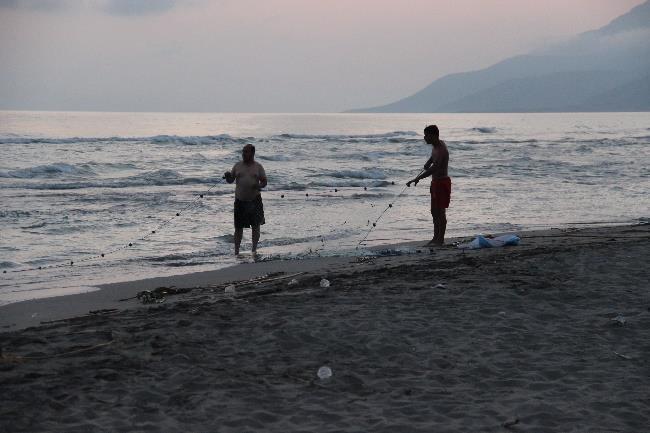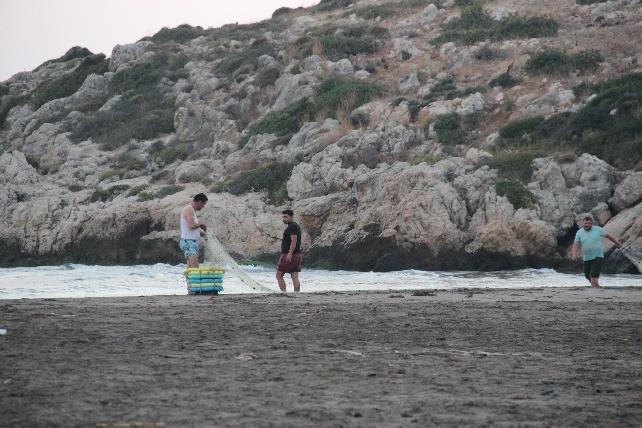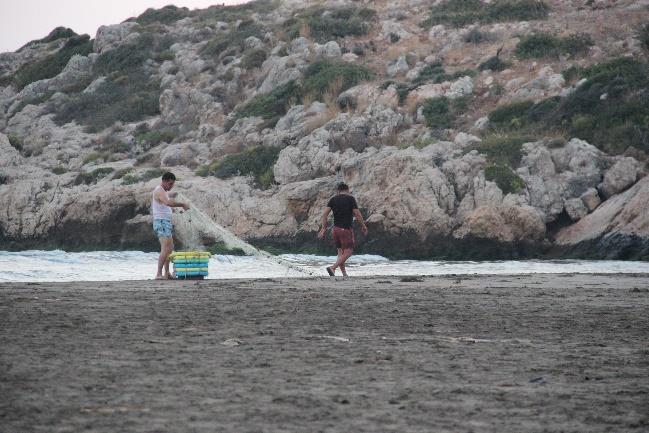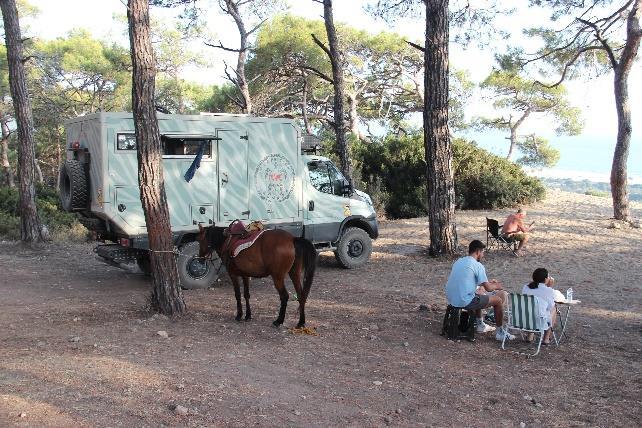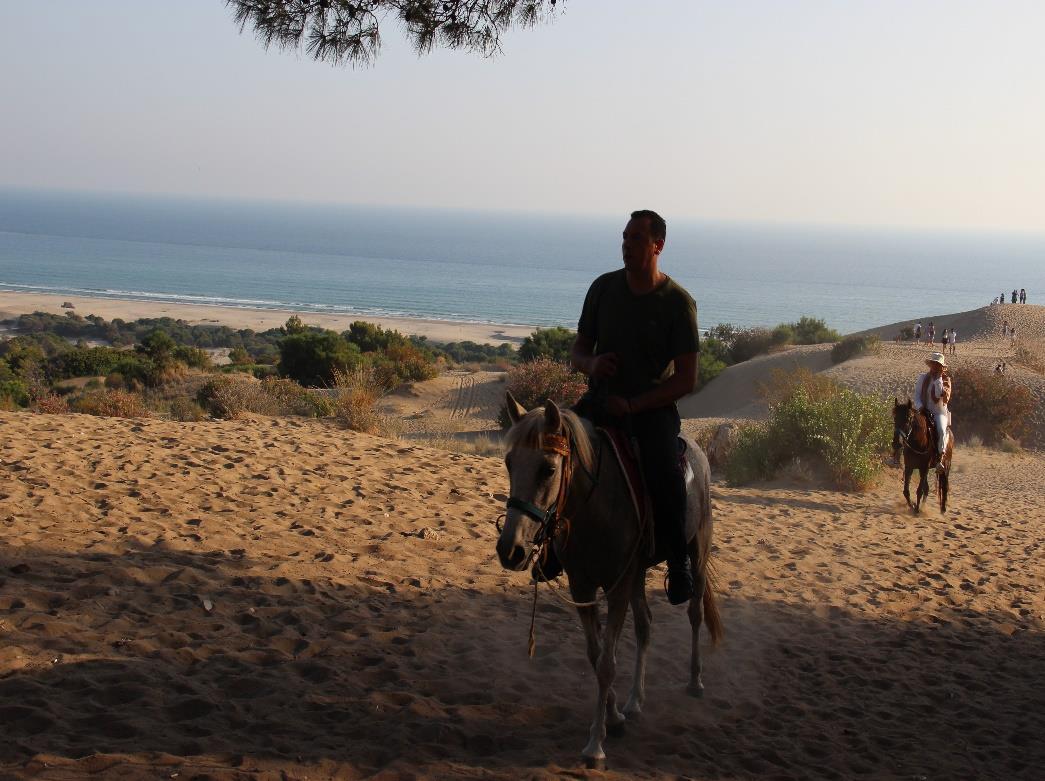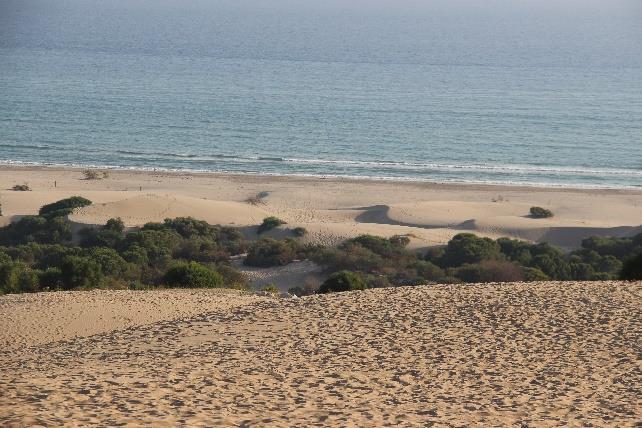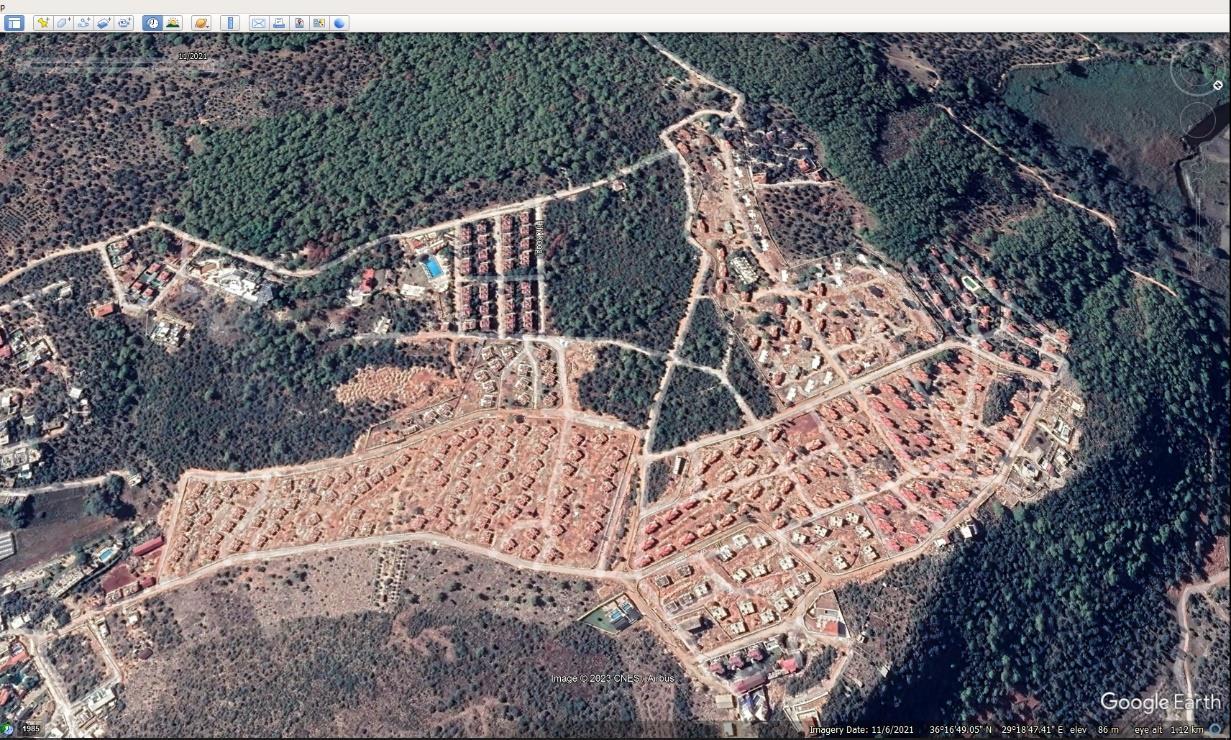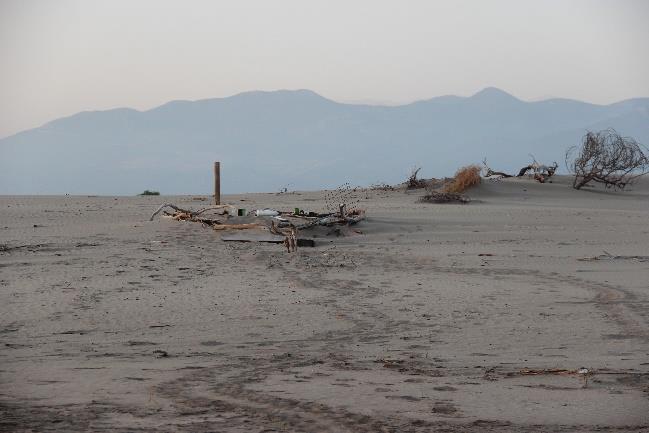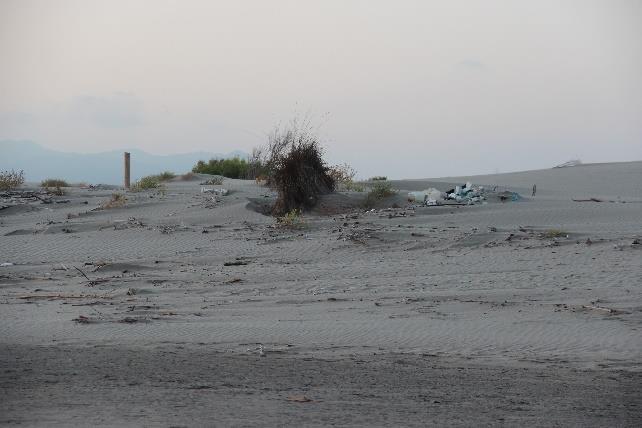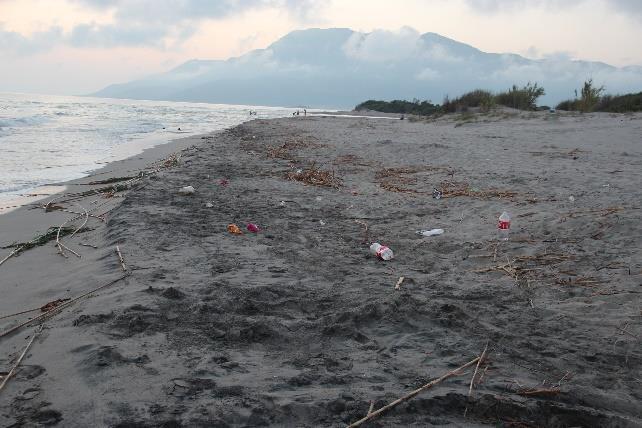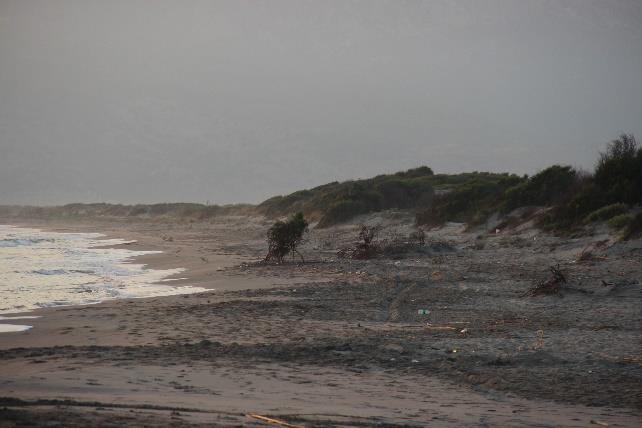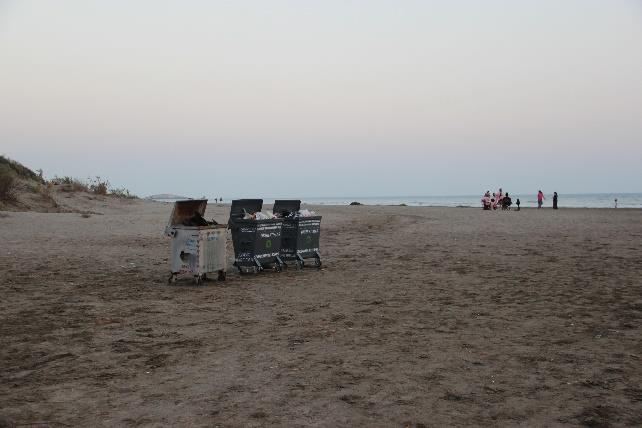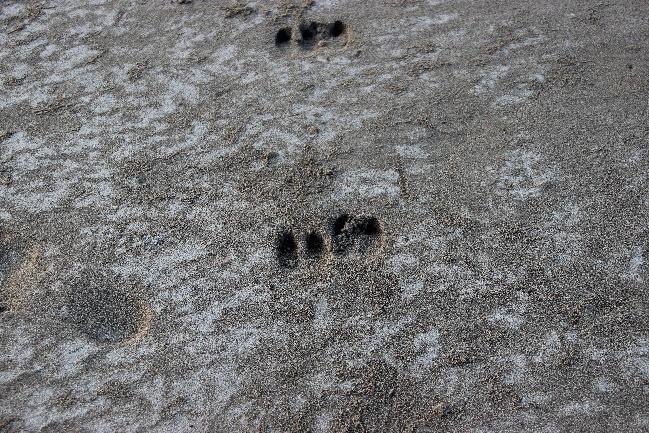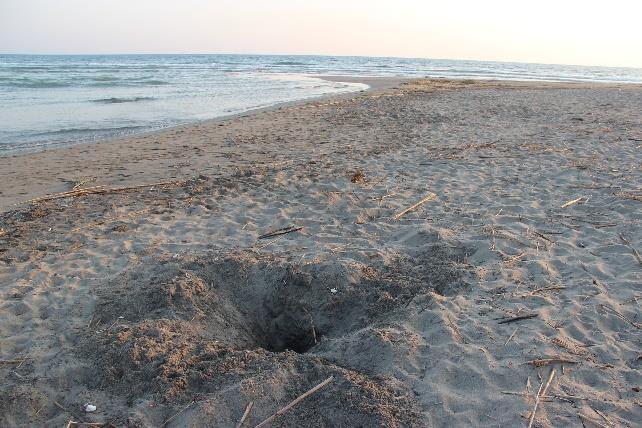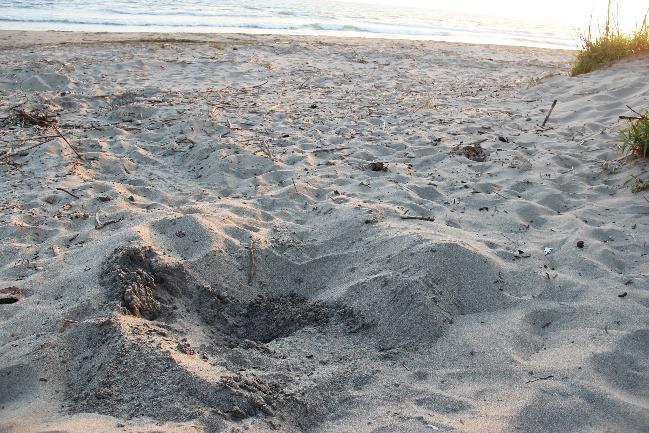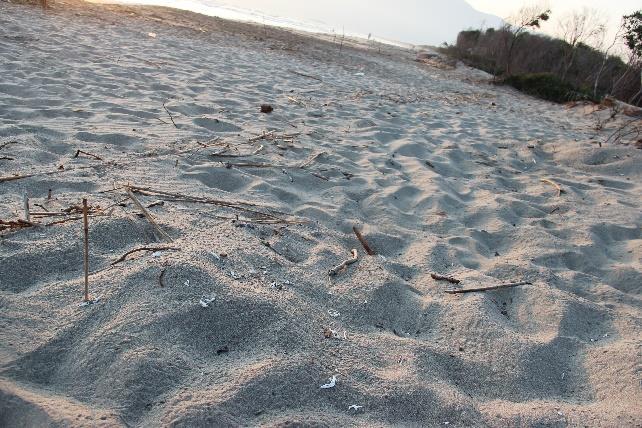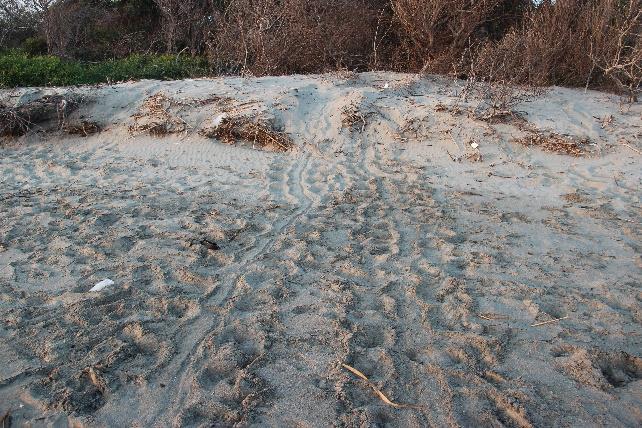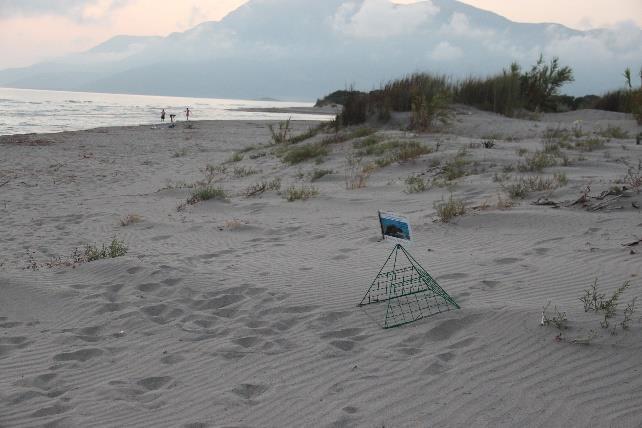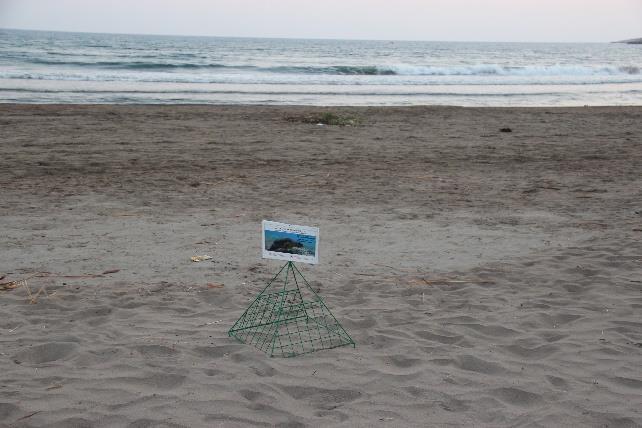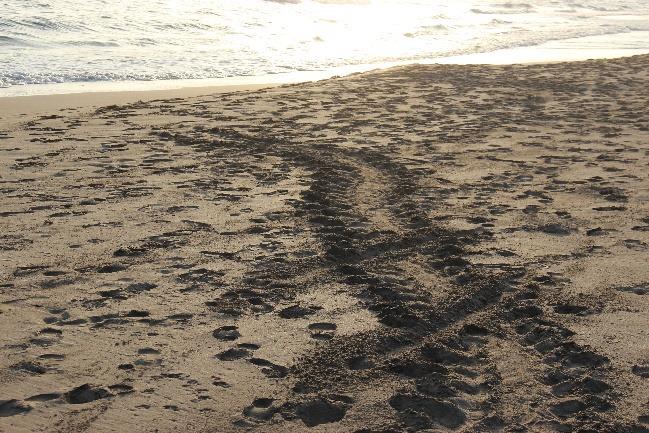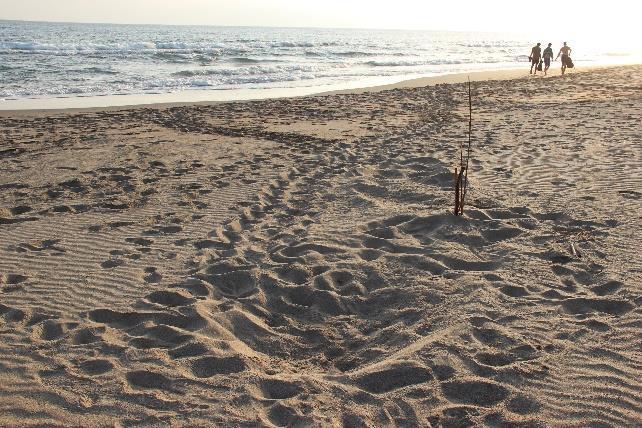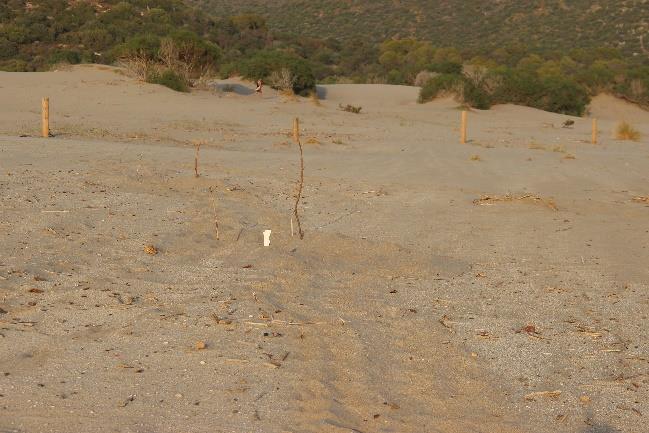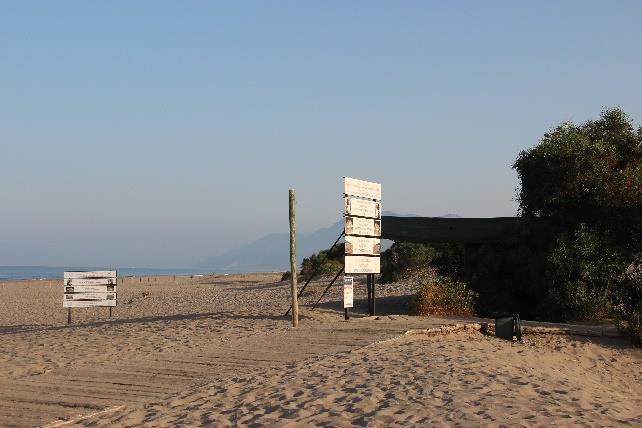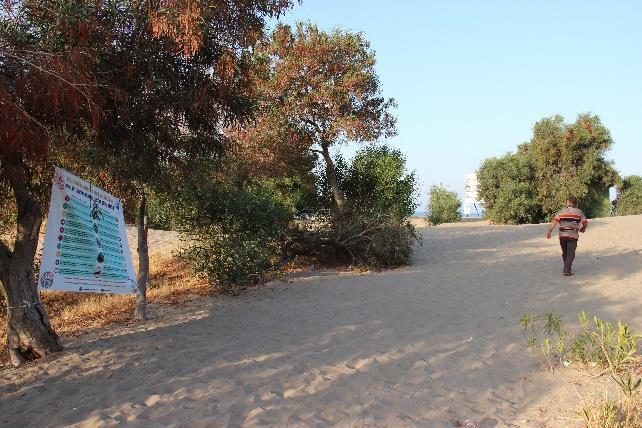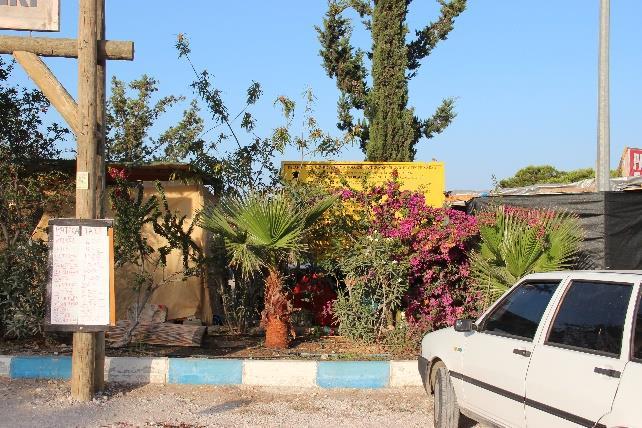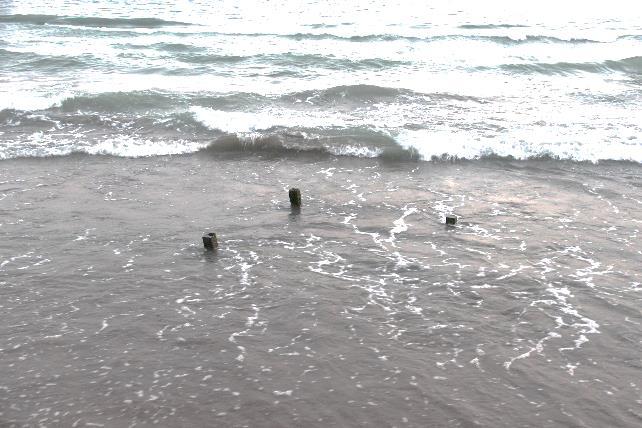Strasbourg, 8th August 2023
T-PVS/Files(2023)39
CONVENTION ON THE CONSERVATION OF EUROPEAN WILDLIFE


AND NATURAL HABITATS
Standing Committee
43rd meeting
Strasbourg, 28 November - 1 December 2023
Open case-file: 2012/09
Presumed degradation of nesting beaches in Fethiye and Patara SPAs (Türkiye)
-REPORT BY THE COMPLAINANT -
Document prepared by Mediterranean Association to Save the Sea Turtles (MEDASSET)
UPDATE REPORT BY THE NGO
Marine Turtle Conservation in the Mediterranean
LOGGERHEAD SEA TURTLE (CARETTA CARETTA) CONSERVATION MONITORING IN FETHIYE AND PATARA SPAs, TÜRKİYE
1 August 2023
Document presented by MEDASSET - the Mediterranean Association to Save the Sea Turtles for the 43rd Standing Committee Meeting of the Contracting Parties to the Convention on the Conservation of European Wildlife and Natural Habitats (Bern Convention)
MEDASSET hereby submits an update report to the second Bureau Meeting of the Bern Convention (September 2023) on the conservation status of sea turtle nesting beaches in Fethiye and Patara Specially Protected Areas (SPAs) in Türkiye
Contents:
SUMMARY
ANNEX 1: FETHIYE DETAILED UPDATE, BACKGROUND, MAPS & PHOTOGRAPHS
ANNEX 2: PATARA DETAILED UPDATE, BACKGROUND, MAPS & PHOTOGRAPHS
ANNEX 3: REFERENCES
Production and dissemination in full or in part of this publication for non-commercial purposes are authorised without any prior written permission provided the source is fully acknowledged and cited.
SUMMARY
MEDASSET visited Pataraand Fethiye SPA inJuly 2023 to assess and document the conservation status of the nesting beaches. The following presents the survey findings in relation to each of the measures under Recommendation No. 183 and 182 (2015).
Fethiye Specially Protected Area: Recommendation No. 183 (2015)
The loggerhead sea turtle (Caretta caretta) nesting beaches in Fethiye (Muğla Province, Türkiye) are among the 12 most important nesting beaches in Türkiye 1 The nesting beaches belong to the Fethiye-Göcek Special Environmental Protection Area (SPA) established in 1988. Scientific studies have shown that nest numbers in Fethiye are declining.2
The habitat destruction due to the developments directly on or behind the nesting beaches continues. New major developments were observed in July 2023 in the Çalış B section of the beach. The first is a mesh barrier filled with large stones, lining the back of the beach between the promenade area and Apache Beach. The second is the ongoing construction of a new permanent structure: a large facility on the beach, which will likely become a cafeteria, complete with two blocks of dressing cabins, and possibly toilets and showers. Renovations in the promenade area are now complete. Of great concern are new hoses installed at all beach entrances, directly leaking onto the nesting beach. In 2022 we reported that in Yanıklar, a large enclosed construction area was observed behind Deniz İncisi. In 2023, we observed a third hotel construction inside. With this new hotel, the wetland that was once present at this section is now destroyed. (Rec.Point 1).
During our 2022 assessment, we reported certain improvements in the management and
enforcement of regulations and suggested actions to resolve the many serious problems that remained. Unfortunately, we observed no improvement in most of the issues in 2023, which continue to impose serious threats to the sea turtles, necessitating immediate actions for further improvements and corrections. While wooden posts mark the nesting zone border in large sections of the SPA, in many areas the zoning is incorrect. In the pristine Yaniklar nesting beach there is no marking of the nesting zone whatsoever Umbrellas are fixed in the sand, but there is no control on the usage and placement of personal umbrellas inside the nesting zone. A number of facilities still have vertical and horizontal walkways over the nesting beach, extending until the wet sand (Rec Points 2, 5). The SPA was dirtier and more polluted than 2022 (Rec. Point 12). We observed AstroTurf carpets on the beach and water sports equipment placed close to the waterline at all times There remain issues with camping, bonfires, planting on the nesting beaches, severe light pollution, lack of vehicle access control, and human presence at night (Rec. Points 2, 4-8, 11, 15) Guards were seen but not enforcing the controls in the protected area (Rec. Points 13, 14). Nests in Çalış A, Çalış B, along with those in front of Deniz İncisi and the hotels in Yanıklar, and in Akgöl were protected with prism cages, however all of the nests that could be identified in the pristine section of Yanıklar were unprotected and fully predated (Rec. Point 10, 16)
Eight years since the adoption of Recommendation No. 183 (2015), the implementation of the measures either have been partially or have not materialized. The destructive development occurring over the past years in complete disregard of the Bern Convention’s Recommendation has severelyaffectedthe sea turtles andtheir habitat Actions must be taken immediatelyto fullyimplement the recommended measures.
Patara Specially Protected Area: Recommendation No. 182 (2015)
In 2023, we observed certain improvements; however, the main unresolved conservation problems that are negatively affecting the nesting beaches remain. As a result, additional measures must be taken to provide the Patara nesting beach the appropriate protection and management.
The SPA borders have still to be confirmed and no final maps are available online. It is unclear if the entire nesting beach (North and South section), the nearshore marine areas and the entire sand dune areas are appropriately zoned and protected against any further development (Rec. Point 1).
Access to the beach at night was enforced more effectively, however human presence was still observed on the sand dunes and vehicle tracks were present in the northern part of the South Beach and several locations of the North Beach (Rec. Points 1 and 3). Prof. Eyüp Başkale from Pamukkale University, who is leading the monitoring project at the SPA this year, recently stated the problem of ATV entrance to the beach and called the authorities to establish more deterrent penalties (Rec. Point 2).
The construction of “Patara Bridge” is completed, and it now connects Xanthos and Ova district, also Seydikemer and Kaş. Its location looks far enough from the beach, but the construction work may have negatively impacted the river dynamics. There was no dune restoration as recommended. As a result there is an alarming spatial increase in coastal erosion along the South Beach, which we believe is related to the river dynamics and to the disturbed overall dune statics in the region as a result of the heavy sand removal in the past 2-3 years. Expert view on this matter is strongly needed.
There was also insufficient nest monitoring in the North Beach and protection from trampling or predation due to lack of resources. The research team monitoring the SPA must be granted sufficient funds and manpower for monitoring, especially North Beach which lacks any zoning and marking or protection of the nests. The topography and characteristics of the South beach must be considered in order to correct the erroneous zoning. (Rec. Point 4, 7, 8 and 9). Poor beach furniture management was observed at the SPA’s single beach facility, which is located within the nesting hotspot (Rec. Point 2).
Construction of the 300+ summer house development in the 3rd Degree Archaeological site of the SPA, in close proximity to the dunes and the nesting beach is completed further increasing the anthropogenic pressures (Rec. Point 4)
To date, Recommendation No. 182 (2015) is only partially implemented. As we have previously indicated, improvements in the management and control for effective implementation of the
Recommendation, over both sections of the beach, will allow this unique natural and heritage site to become a showcase example, similar to the much renowned nearby Dalyan SPA (İztuzu beach). It is of high priority for authorities to take further action and resolve the remaining unresolved conservation and management problems with no delay
MEDASSET calls upon the Turkish authorities to:
Urgently fully implement Recommendations No. 182 & 183 (2015) through a comprehensive and updated action plan.
Produce SPA management plans for both sites that include zoning and that cover both the land and marine areas, including clear descriptions of permitted land uses and activities. The current law (Circular)providesgeneralguidelines,butamanagementplan foreachSPAisnecessarytospecify and localise these regulations.
In relation to Fethiye, provide an official map of the beach and adjacent land area that are under dispute, and of the areas that have been permitted for development. As per Measure 1 of the Recommendation, declare a building moratorium to prevent any further development (hotels, jetties, etc ) on or directly behind the nesting beaches and correct the zoning errors.
Provide the necessary resources for the effective protection of the beach (guards, vehicle barriers etc.)
In relation to Patara, confirm Patara SPA’s zoning, publicize the maps and ensure that the entire nesting beach (North and South sections), the nearshore areas and the entire sand dune areas are appropriately zoned and protected against any further development
Address the concerns raised in MEDASSET’s complaint regarding the Patara now largely completed summer house construction project, its scale, the associated impacts, the lack of an EIA and of a carryingcapacity study. Provide detailed information on the additional houses constructed outside the summer house construction project.
MEDASSET calls upon the Bern Convention Standing Committee to:
Discuss the case file at the 43rd Meeting of the Standing Committee.
Keep the case file open for further monitoring.
Urge Turkish authorities to implement Recommendations No. 182 & 183 (2015) as soon as possible.
Request Turkish authorities to produce the necessary plan and provide further information on the case, as requested in the abovementioned points.
ANNEX 1: DETAILED UPDATE, BACKGROUND, MAPS & PHOTOGRAPHS FETHIYE SPA, TÜRKİYE
DETAILED REPORT
Nesting beach description (Fig.1): The 8 km beach is split in three sections: Çalış, Yanıklar, and Akgöl. Çalış is 2.5 km long and divided into two sections: Çalış B (Koca Çalış - northern part) and Çalış A (Küçük Çalış - southern part), which is the section that is bordered by a wall and a promenade lined by tourist infrastructures. Çalış Hill marks the end of Çalış and the start of Yanıklar, which extends northward for 4.5 km, including the so-called “small beach (Karataş beach)”. Kargı Stream marks the border between Yanıklar and Akgöl (1 km, also known as Karaot beach). For a detailed description of the Fethiye SPA nesting beaches see MEDASSET 2009.
MEDASSET visited Fethiye SPA in July 2023 to assess and document the management and conservation status of the nesting beaches. The following presents the survey findings in relation to each of the measures under Recommendation No. 182 (2015).
1. Stop any further development of permanent structures (buildings, roads, shipyard, jetties/docks, etc.) along the entire coast of the nesting site complex, in order not to reduce further the nesting habitat;
The promenade area, renovated in 2021-2022 was crowded and lively both during the day and at night,butnonewpermanent structureswereseeninÇalışA.Hoseswereinstalledatall beachentrances, directly leaking onto the beach (Fig.2).
Two major permanent structures were seen in Çalış B. The first is a mesh barrier filled with large stones, lining the back of the beach between the promenade area and Apache Beach (Fig.3a-e). All camping sites in this section have been moved behind it. Three rows of high poles were installed in the sand to the front of it, for umbrellas (Fig.4a-c). Right after this area was the ongoing construction of another permanent structure: a large facility on the beach, which will likely become a cafeteria (Fig.3b, 4c, 5a-3) complete with two blocks of dressing cabins, and possibly toilets and showers (Fig.5c-e). The facility was built on the wooden stakes erected at the same location last summer (see Fig.24 in 2022). Near the post numbered Ç104, a cage was placed in front of the changing cabins, and a motorcycle was parked near it (Fig.5d-e). Beach visitors were seen usinga hose comingright out of these cabins(Fig.6). The entire area was fitted with horizontal and vertical walkways (Fig.5a-c), and an umbrella base was left unburied, with a large under it (Fig.7a-b). A cage was located right next to one of the vertical walkways (Fig.8a-b). One of the vertical walkways extends right into the sea, connecting to a scaffoldlike structure (Fig.9a-b). A lifeguard tower was also installed on the beach (Fig.5b-c, Fig.10). Towards thenorthernborderofÇalışB,somefacilitiesbeganbuildingtinyhouseswithintheirpremises(Fig.11ab), with more being built at the back of the beach in enclosed areas.
In Yanıklar, a third hotel isbeing constructed inside the large enclosed area observed behind Deniz İncisi in 2022 (Fig.12a-c)3. With this new hotel construction, the wetland that was once present at this section is now entirely destroyed.
2. Remove any structure (wooden paths, wooden pavilions, bars, platforms, showers, carpets, patios, etc.) from sand zones, including those to be restored, especially in areas with relatively narrow beach width and/or in tracts with narrow sandy strips; and restore the sandy areas;
5. Map the whole Fethiye coast using long-term data, maps and imagery to identify the past, current and potential most suitable zones for sea turtle nesting, and set a maximum percentage limit of sandy tracts where touristic structures are allowed on the nesting beach and define (A) coastal tracts less suitable for turtle nesting, where beach furniture is allowed at appropriate densities and (B) coastal tracts adequate for turtle nesting, where beach furniture and access at night are not
allowed. Enforce beach furniture removal/stacking at night along the entire nesting beach complex during the nesting/hatching season;
We hereby report on both of the above measures jointly (No.2 and No.5), as in 2021 and 2022, in order to better reflect the updated situation of nesting beaches after new arrangements in 2021.
In 2022, Fethiye SPA was fitted with wooden posts supposedly marking the upper border of the nesting zone as part of the project titled “Determining the Sea Turtle Nesting Areas and Demarcation of Their Borders” carried out by the Directorate General for Preservation of Natural Heritage under Turkish Ministry of Environment and Urbanization. The only areas lacking these zoning posts are the promenade area in Çalış A, the picnic area and the pristine section in Yanıklar Beach. However, the posts are far from defining the nesting zone in some parts of the SPA, particularly in Çalış B (Fig.13ac) and in the southern part of Yanıklar (Fig.14a-c). They are located only a few metres away from the shoreline while the actual nesting zone is occupied by facilities and their beach equipment.
In Çalış A, the layout of sunbeds differ between 1 to 2 rows (Fig.15a-b). Sunbed stacking at night was observed only in front of Middoor, Uras Beach and Ey Cafe (Fig.15b, 16a-b), which are adjacent to each other, but were left within the nesting zone. Furniture stacking was not seen anywhere else in this section (Fig.17a-b) or the rest of the SPA. Umbrellas of the facilities in the entire section are fixed in the sand, but there seems to be no control on the random usage of personal umbrellas inside the nesting zone (Fig.18). All of the stairs connecting the promenade area to the beach were fitted with hoses to wash feet (Fig.2). Shower cabins near the stairs also drain onto the beach (Fig.19).
In Çalış B, a lot of visitors were seen using their own umbrellas directly inserted in the sand within the nesting zone (Fig.3c, Fig.20a-b), especially in front of Resul Bali Sultan Beach and Leon Beach, where there is also a volleyball court entirely surrounded by a net and a small playground for kids on the beach to the rear of zoning posts. A number of facilities still have vertical walkways extending until the wet sand (Fig.8a-b, Fig.9a, Fig.21a-b). Yücel Restaurant to the south of this section had multiple horizontal and vertical walkways connecting their rows of sunbeds, entirely covering the nesting zone (Fig.22). Surf Beach next to Surf Cafe had a wooden tent-like structure, cushions, and two large logs right by the shoreline (Fig.23a-c). All of the surfing facilities (Surf Station/Mavi Beach, Surf Beach, Jiva and Celina) still had AstroTurf carpets on the beach and their water sports equipment placed close to the waterline at all times (Fig.24a-b). A raised platform was placed inside the sea, for people to dine on (Fig.25a-b). Four rows of sunbeds were seen in front of Hanel Houses, and seven rows in front of Jiva beach (around 150 in total) were placed behind the wooden posts. Five large gazebos were seen near Jiva’s sunbeds, right adjacent to the volleyball court, and a few makeshift structures resembling pavilion frames were observed in front of the new mesh barrier to the south of this section (Fig.26). The strand in front of the new mesh barrier to the south of the new facility seemed to have the highest number (and density) of nests in the entire Çalış section (A and B combined) this year, with 6 cages close to each other (Fig.3d-e, 4b-c, 8a-b, Fig.27a-b)4. A few kayaks and boats were left on the beach (Fig.28a-b). There was no furniture stacking or removing at night.
In Yanıklar, Karataş Beach is the same as last year, with recreational equipment fully occupying the entire beach (Fig.29a-b). In front of Deniz İncisi, visitors seemed to be free to insert their umbrellas as they please (Fig.30), and three cages were seen towards the section’s southern end, among all these visitors and their umbrellas (Fig.31a-b). Wooden posts in this part seemed to be properly marking the nesting zone, although they were used in creative ways by the visitors (Fig.32). The beach strand in front of the new hotel construction site seems to be frequently exposed to heavy vehicle entry (Fig.12bc). The water sports area between Liberty Fabay and TUI BLUE Sensatori Barut still has a very high number of kayaks and speed-boats on the nesting beach (Fig.33). Hotel TUI BLUE Sensatori Barut’s lifeguard tower also remains very close to the sea, with vertical and horizontal walkways leading to the quay (Fig.34a-b). Akmaz Doğa Mesire Yeri (Akmaz Natural Recreation Area) established in 2022 and run by the Fethiye Forestry Department was fully operational and overly crowded during the day, with
no zoning posts and a lot of visitors with their umbrellas randomly inserted in the sand (Fig.35a-c)5 The zoning posts are also absent in the pristine section and start in front of Lykia Botanika, at only 5 metres from the shoreline, almost within the semi-wet zone (Fig.14a). The entire nesting zone in front of this facility is covered with a layer of artificial grass, with beach furniture placed on top (Fig.36a-b) and a volleyball net right next to it (Fig.14a, Fig.36a). Most facilities in this section prefer single piece shaders instead of umbrellas and beach bars are usually very close to the nesting zone (Fig.37). Club Tuana’s watersports rails extend all the way into the sea (Fig.38). Yonca Lodge still has the volleyball net andtheshowersinsidethenestingzone(Fig.39).Towardstheendofthissection,thebeachisalmost entirely covered with beach furniture or boats (Fig.40a-c).
In Akgöl, the beach strand between the section’s southern end and Hayal Café (former Karaot Buffet)washeavilyused6 andsomevisitorswereusingtheirprivateumbrellas(Fig.41a-b).Eventhough the furniture was removed from the so-called nesting zone at night, the wooden posts in this section fail to demarcate the zone correctly (Fig.42). Hayal Café did not have too many sunbeds and their pavilions were outside the nesting zone (Fig.43a-b). The core nesting area at the northern end was also exposed to heavy beach usage, and a lot of visitors had their personal umbrellas inserted in the sand (Fig.44). However, almost everyone left at sunset (Fig.45). One of the old pavilions at the rocky end was missing (Fig.46a-b).
3. Stop sand extraction and ensure the application of deterrent penalties for these illegal activities;
Three small piles of sand mixed with pebbles were observed at the mouth of main channel outlet near Çalış Hill (Fig.47a-b). Piles of sand were also observed at the southern end of Akgöl Beach, near the Municipality’s facility (Fig.41a, 20230701_Akgol_Morning.mp4), indicating the possibility of new landscape arrangements that may be observed next year.
4. Remove planted vegetation, acacia in particular, with a view to restore the remaining sandy beach;
PlantedvegetationintheSPAfullyremainsandkeepsexpanding.Newlyplantedonesareexpected in the following years near the Tiny Houses and the new facility in Çalış B, and definitely the new hotel in Yanıklar.
6. Prohibit the use of beach furniture and other structures or facilities on the sandy zones of Akgöl beach, regulate use of the core nesting area in the sandy northern end of the beach, and carryout the necessary controls to check enforcement;
At the time of our survey, the section was heavily used with personal beach equipment, including umbrellas inserted into the sand (Fig.44). At the northernmost point, one of the old pavilions was missing, but the remaining seven were used by visitors, and someone was making barbecue in one (Fig.46a-b).
A total of 16 prism cages were observed in the core nesting area (Fig.48a-c), with 12 at the southern side and 4 at the northern end, in front of the pavilions7. Due to heavy crowd, the underside of prism cages could not be checked.
7. Reduce light pollution to a minimum along the whole coast during the nesting/hatching season: (i) remove all lights not strictly necessary, (ii) reduce the number of lights allowed for each business company, (iii) all lights considered as strictly necessary should be reduced in power and (iv)
5 Video titled “20230701_Akmaz_MorningCrowd.mp4”
6 Video titled “20230701_Akgol_Morning.mp4”
7 Video titled “20230701_Akgol_CoreArea.mp4”
be red or orange-yellow, (v) all lights should be shaded in the direction of the beach. Further reduce lights after a certain time in the night, for not less than 50% of the dark time. Where possible, reduce height of lights, use motion sensors and native bushes/plants as light buffers on roads and properties. Prohibit light show equipment use;
In Çalış A, even though the light from the promenade area do not reach the beach, visitors were freely using the beach, using lights (Fig.17a-b, Fig.49)8
The majority of facilities in Çalış B were fitted with orange lights, but the lights of some were very close to the sea, particularly the orange hanging lights of Surf Beach (Fig.50). Lights on top of the dressing cabinets near the new facility were brightly illuminating the surrounding sections (Fig.51a-b). Wedding events9 in five different locations (Bahar, Ays, Petunya, Zentara and Surf Cafe) caused considerable light pollution on the beach (Fig.13c, Fig.52a-c). A brief search on social media also revealssucheventsongoingsinceJune10. TerraceCafé at thesouthernendofthissectionalso had bright colourful lights (Fig.53). The northernmost part of Çalış B, from the old platform remains until Çalış Hill was filled tents and caravans, with a lot of groups engaged in night picnics with bonfires, barbecue fires, and lamps, causing severe light pollution (Fig.54). There was also a raised platform right on the shoreline, where a group was seen dining (Fig.25b). Particularly of interest, was the presence of 2 cages in the narrow area between Yücel Restaurant and Wonder Terrace at the southernmost part of Çalış B (Fig.26), where the facility behind it was closed for renovation –and thus, entirely dark at night- at the time of our survey.
In Yanıklar, Karataş Beach was making light shows in blue and green at nights, constantly illuminating the entire SPA with additional aerial light shows11. Deniz İncisi and the facility next to it had dim lights, which did not reach the nesting zone at all. The new hotel construction was visible from the entire SPA at night -even from Çalış A and Akgöl Beach, as the heavy machines kept operating all day long, causing severe light pollution with overly bright white spotlights (Fig.55a-c). Liberty Fabay, despite fitting its pavilions with dim orange lights, created extreme noise pollution with its beach bar and disco, which also illuminated the nesting beach with aerial light shows (Fig.56a-b). The quay between two hotels had blue lights that were dimmer this year (Fig.55b-c). Hotel TUI BLUE Sensatori Barut,likeinthepreviousyears,didnotcreateanysignificant light ornoisepollutionatnight.However, the security lights between the two hotels continue to be a problem, brightly illuminating the nesting zone. Only a few campers and fishermen were seen in the pristine section using lights at night (Fig.57). All facilities to the north of the pristine section had dim orange lights (Fig.58). The very bright security light between Okaliptüs and Tuana, next to the water sports area continues to be a powerful source of light pollution (Fig.59). Except for this facility, even the quay of Lykia Botanika was dimly lit this year (Fig.60a-b).
In Akgöl, a few caravans were using white lights, while the rest largely preferred dim orange lights or LED strings (Fig.61a-b). The lights of Hayal Café and the Municipality’s facility were also orange and dim (Fig.42, Fig.62), with very little to no music.
8. Build permanent barriers (not ditches) on the roads to prevent vehicles from accessing the beach, designate parking spaces and official picnic areas away from the beach;
Permanent barriers that prevent vehicle access to the beach have increased in number. This year, a new permanent barrier was seen in Çalış B, made of a mesh scaffold filled with large stones, lining the front of several large camping sites mid-section, (Fig.3a-e, 4a-b). However, a motorcycle was still seen on the beach in this section, way too close to a cage (Fig.5d-e). The barrier also seems to be effective
8 Video titled “20230630_CalisA_Night.mp4”
9 Video titled “20230630_CalisB_Night_SurfCafe.mp4”
10 Lotus Beach – wedding in June 2022: https://bit.ly/3S9ic9w
Lotus Beach – graduation in June 2022: https://bit.ly/3Q1gPrL
Petunya - wedding in June 2022: https://bit.ly/3Brz7yi
Bahar Beach
wedding in July 2022: https://bit.ly/3vpoXdJ & https://bit.ly/3vldiwz
11 Video titled “20230701_KaratasBeach_NightLightShow.mp4”
at screening the lights behind. GPS coordinates of its approximate starting point -near Apache Beach and the newly built facility- is provided in Table-1 and it extends all the way until the promenade area in Çalış A. In front of the renovation site, where tiny houses were being constructed on the beach, vehicle tracks were observed within the nesting zone (Fig.11a). The northernmost part of Çalış B, close to Çalış Hill is used a caravan area, where people can park their vehicles very close to the water line and have picnics and barbecues on the beach (Fig.54a-b, Fig.63). Zirkon Beach’s caravan area is also another spot, where vehicles can approach the water line too much (Fig.64).
In Yanıklar Beach, all facilities (Karataş Beach, Deniz İncisi, and the hotels) control vehicle entrance, although some tracks were observed on the beach between Deniz İncisi and the new hotel’s construction site (Fig.12b-c). Akmaz picnic area has permanent barriers to control vehicle entrance, but the picnic area itself is right on the nesting beach (Fig.35a-b-c), even though it is mostly empty at night. Vehicle tracks were observed in the pristine section of Yanıklar (Fig.65a-c), especially around the uncontrolled vehicle entrance point in mid-section, where a 4x4 was also seen passing by. A tractor was seen directlyon thebeach duringoursurvey(Fig.66a-b).This sections ends with an open entrancepoint at the north, where the beach is not suitable for sea turtle nesting (Fig.67a-b).
Despite the lack of actual permanent barriers in Akgöl, vehicles mostly do not enter the nesting zone. Most of the cars and caravans were parked behind the zoning posts (Fig.48b, Fig.61a-b), but one droveall thewaytotheshoreline,throughamong5cagesinitsdirection(Fig.48a,Fig.68a-b)12.Another vehicle was seen driving on the nesting beach and it later parked at the back of zoning posts (Fig.69ab). One family was spotted making barbecue on one of the pavilions at the northernmost end of the section (Fig.46b), and some caravans were seen doing the same right at the back of the nesting beach (Fig.70).
9. Regulate maritime traffic during the nesting/hatching season, by prohibiting any motorised traffic at appropriate distances near the coast, by setting speed limits and foreseeing marked corridors from the beach to open waters;
Fishing boats, speed boats and cruise yachts were seen at various sections in the SPA (Fig.12d-e, Fig.15a, Fig.16b, Fig.18, Fig.23a-b, Fig.25b, Fig.33, Fig.34a-b, Fig.38, Fig.40c, Fig.63, Fig.67b, Fig.71a-h). Their traffic during the entire sea turtle nesting/hatching season is regulated by a number of laws, but information on actual and strict enforcement remains vague. Open water borders were marked with floating ropes in all sections.
There was also considerable maritime traffic by the small island right across the pristine section in Yanıklar, where over 20 touristic boats were seen near the shore (Fig.72a-b).
10. Set up long-term research and conservation programs conducted by a permanent team recruited on a long-term perspective. This team should have adequate manpower to monitor the entire beach and protect all nests if necessary during the entre nesting/hatching season. The team should also assess across the years and using the same comparable methods: (i) the disorienting effects of photo-pollution on hatchlings, (ii) disturbance of nesting females, and (iii) predation of nests (or attempts);
The SPA is still protected on a seasonal basis, by DEKAMER almost every year. However, the efficacy of the monitoring team seems questionable, in terms of numbers and the quality of work. A single volunteer was seen patrolling the beach in Çalış early in the morning, alone, and half asleep (Fig.73). She had no interaction with the beach users.
The pristine section of Yanıklar gave the impression of being monitored irregularly instead of a daily basis, as no proper markings or protective cages were seen, and all observed nests were predated (Fig.74a-c). In comparison to 2022, the monitoring efforts this year looked very poor. 12 Video titled “20230701_Akgol_CampingVehicleEntrance.mp4
11. Prohibit camping and bonfires and set appropriate time limits for the operation of beach bars at night during the nesting and hatching season;
Campers were seen in all sections, with either tents or caravans. Besides the already designated camping areas and facilities, sporadic tents were seen at the northern end of Çalış A (Fig.18, Fig.19, Fig.75a); in front of the newly built permanent barrier (Fig.75b-c), towards Çalış Hill (Fig.75d) and even on the remains of the concrete platform (Fig.75e) in Çalış B; near Deniz İncisi (Fig.f-g), as well as the immediate back of the beach in Akmaz (Fig.75h-i) and in the pristine section (Fig.57, Fig.66a) in Yanıklar; and a few in the core nesting area at the northernmost end of Akgöl (Fig.46a).
Bonfire remains were also observed in all sections (Fig.76a-b), except Çalış A and the strand between Karataş and Akmaz Beach. Barbecue fires and bonfires were directly observed in several sections at night (Fig.54b, Fig.57, Fig.70). Campers in Yonca Lodge were actively making barbecue right by the sea at night.
The operation of most beach bars and other facilities continued until at least 00.00.
12. Take measures to clean the beach and empty appropriately located bins on a daily basis, and ensure sewage is not discharged into the sea;
Fethiye SPA in general was more polluted than it was in 2022. Çalış A was relatively clean, possibly because of cafés and bars instead of camping sites, plus sufficient number of bins that are emptied on a regular basis. Still, it was possible to see random litter, especially around spots used at night (Fig.15a-b)
Bins in Çalış B were overfilled with garbage, most of them spilling on the roads. The beach was also polluted, with litter left either directly on the beach or in plastic bags, commonly left next to zoning posts (Fig.3d-e, 4a-c, 71a, 75c-e, 77a-f). Some litter was also left near the meshed barrier (Fig.27a-b).
Public usage areas in Yanıklar were quite littered during the day (Fig.31a-b), while the hotels area did ot really have a litter problem. Drainage channels reaching the sea remain as sources of pollution (Fig.40a, Fig.78a-c)
The main channel near Çalış Hill also continues to be a concern, as it collects the draining water from all greenhouses and usage water from the houses around it (Fig.79a-b).
13. Set up adequate regulations and enforcement for the measures above, including regular day and night controls along the entire coast. Define and enforce fines for noncompliance with above regulations;
Zabıta were seen at the entrance of promenade area (border between Çalış A and B) at night. Instead of patrolling or warning people about beach usage and compliance, they were busy chatting (Fig.80). About 40 mins later, they were seen at the same spot, still doing nothing about all the people sitting on the beach with their lights. No control was observed in Çalış A or B.
There is still no clear information regarding fines against noncompliance with all above regulations, and the extent of enforcing these fines (if any) is even less clear.
14. Ensure that adequate financial and human resources are allocated to the control and management of the beaches;
No clear information on this could be obtained during our survey.
15. Improve information to local community and tourists about sea turtle nesting and sustainable use of the beach. This should include effective communication of regulations (incl.
regulations implementing the Recommendation) by the authorities to stakeholders and businesses, signs at all major beach entry points, and awareness campaigns aimed to the guests of the big resorts, in collaboration with the owners and managers. Encourage beach hotels and businesses to support scientific teams and involve the local community in the protection and management of the protected area;
Fethiye is one of the few SPA’s where local community and tourists receive frequent information about sea turtles and beach usage. Although everyone is aware of the region’s importance as a sea turtle nesting site, the survey in 2023 failed to observe any form of community involvement or a proper use of the beaches.
The number of signs in the SPA did not change in 2023, with the addition of just one seemingly incompletenewsignbehindthenewlybuilt meshbarrierinÇalışB(Fig.3a-c).Thepublicpicnicfacility in Akmaz Beach still lacks a sign regarding sea turtles, even though it is adjacent to the pristine section. Yanıklar, in general, definitely needs more signs.
The sea turtle observatory next to the Municipality’s facility in Akgöl was closed.
16. Continue to protect all nests with cages, until the different conditions obtained through the other measures above will allow again a more natural process;
Nests in Çalış A, Çalış B, along with those in front of Deniz İncisi and the hotels in Yanıklar, and in Akgöl were protected with prism cages (Figures 3d-e, 4c, 5d-e, 8a-b26, 27a-b, 31a, 34b, 48a-c, 68ab). Due to the very high number of visitors during our surveys, none of them could be checked for the additional protective grills at the base. All of the nests that could be identified in the pristine section of Yanıklar were fully predated (Fig.74a-c). The overall number of nests in the pristine section was considerably lower this year. Since no visible demarcations were seen (for potential old nests that are still intact), the presence of buried flat grills could not be checked either.
Observations on other activities and impacts:
The SPA was unusually overcrowded during the time of our survey, teaming with people and cars, which may be the direct cause of overfilled garbage bins and too much litter on the beach, especially in Çalış A and B.
The construction of Fabay Villas (Fabay Kızılada Apart Houses) behind Hotel Liberty Fabay was finished (Fig.12d).
Tiny houses seem to be the new trend in the SPA, where 3 facilities were closed for building tiny houses by the beach, and several more being built behind the facilities.
Pieces of concrete were observed for the first time near the stone wall at the border between Yanıklar and Akgöl (Fig.81a-b).
Rod fishing was observed at several locations in the entire SPA, in the morning and at night (Fig.48c, Fig.61b, Fig.82a-e). Fishing boats were seen in Çalış A early in the morning.
Ungulate droppings were seen in Karataş, Akmaz, and the pristine section (Yanıklar) (Fig.65c, Fig.83a-e).
No apparent coastal erosion was observed.
Stray dogs were common in Çalış A and B, and at Akgöl, especially near the core nesting area (Fig.46a).
The number of nests in the pristine section of Yanıklar seemed to have decreased, compared to previous years (actual nest numbers may be needed).
TABLES
Table-1. GPS data of important locations in Fethiye SPA. Records were taken by GPS Coordinates, developed by Fundroid 3000, with an accuracy of 8-14 m. (*=added or updated in 2023)
COORDINATES DEFINITION
36°39'24.23"N - 29°06'37.87"E South end of section and the promenade area
36°39'33.18228"N - 29°06'35.59716"E Sign at beach entrance (“Makri Beach”)
36°39'37.55664"N - 29°06'33.25860"E Sign at beach entrance (“Motto Bar”)
36°39'45.16272"N - 29°06'30.03840"E Sign at beach entrance (“Çalış Taxi”)
36°39'57.07188"N - 29°06'22.82364"E Sign at beach entrance (“Uras Beach”)
36°40'04.77156"N - 29°06'18.30204"E
36°40'05.4"N - 29°06'16.8"E
North end of section and the promenade area
Sign right before promenade stairs
36°40'13.8"N - 29°06'10.9"E * Newly installed umbrella poles
36°40'19.2"N - 29°06'06.6"E * Southern start of new facility
36°40'22.9"N - 29°06'01.0"E
Water sports ramp near “Sunset Beach”
36°40'23.2"N - 29°06'00.5"E * The small pier in of “Jiva Beach”
36°40'25.4"N - 29°05'59.5"E
Sign in front of “Sunset Beach (Hanel Houses)”
36°40'29"N - 29°05'53"E Jetty near “Surf Cafe”
36°40'43.98708"N - 29°05'32.24940"E
36°40'43.40532"N - 29°05'33.50256"E
Abandoned concrete platform
North end of the facilities (“Mavi Beach”)
36°40'44.9"N - 29°05'31.6"E * Approximate end of zoning posts
36°40'44.51988"N - 29°05'31.21836"E
Large drainage channel and stones at its mouth
36°40'46.73"N – 29°05'23.95"E Caravan area used by “Zirkon Beach”
36°40'40.72728"N - 29°04'58.82592"E South end of “Deniz İncisi”
36°40'43.1"N - 29°04'55.8"E Sign at “Deniz İncisi”
36°40'43.77612"N - 29°04'52.48776"E North end of “Deniz İncisi”
36°40'48.6"N - 29°04'42.3"E
36°40'51.6"N - 29°04'33.3"E
36°40'52.6"N - 29°04'31.6"E
36°40'55.0"N - 29°04'23.5"E
36°40'50.3"N - 29°04'04.6"E
36°40'57.0"N - 29°03'17.1"E
36°41'02.5"N - 29°03'06.2"E
36°41'07.73160"N - 29°02'58.06068"E
36°41'10.1"N - 29°02'55.3"E
36°41'12.7"N - 29°02'51.5"E
36°41'16.5"N - 29°02'46.8"E
36°41'20.14584"N - 29°02'41.52624"E
36°41'24.0"N - 29°02'35.4"E
36°41'32.2"N - 29°02'28.8"E
36°41'38.9"N - 29°02'21.8"E
36°41'49.03548"N - 29°02'08.39040"E
36°41'48"N – 29°02'07"E
South border of “Liberty Fabay”
Water sports ramp between 2 hotels
Jetty and Lifeguard in front of “Barut Sensatori”
End of pavilions and sign at “Barut Sensatori”
Polluted drainage (north end of Akmaz Beach)
Vehicle access point in pristine section *
Starting point of wooden posts
Northernmost facility in Yanıklar Beach
Jetty and information sign at “Lykia Botanika”
Drainage channel near “Doğa Camping”
Drainage channel near “Kafi”
Jetty and water sports equipment (“Tuana”)
Kargı Stream, bridge, vehicle entrance point, and concrete wall (Yanıklar-Akgöl border)
New sign in front of Municipality’s Facility
Information sign (“Hayal” - former Karaot Bf.)
Information sign, near parking spot
Wooden pavilions, section’s north end



























































































































































































